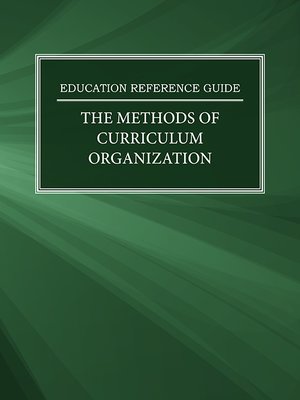Education Reference Guide:The Methods of Curriculum Organization
ebook
By The Editors of Salem Press

Sign up to save your library
With an OverDrive account, you can save your favorite libraries for at-a-glance information about availability. Find out more about OverDrive accounts.
Find this title in Libby, the library reading app by OverDrive.



Search for a digital library with this title
Title found at these libraries:
| Library Name | Distance |
|---|---|
| Loading... |
The series begins with John Loeser’s overview of core curricula in the United States and the ongoing debates on
the inadequacy of current core curriculum requirements and what should and should not constitute essential subject
matter. Angelia Mance continues the conversation with an article on state curriculum guidelines and the history of
shifting state and federal influence on curricula, including the impact of the No Child Left Behind Act. The topic of
integrated curriculum is introduced by R.D. Merritt, who discusses the history of the approach and the need for more
comprehensive research on the effectiveness of bridging different disciplines. Sally A. Coppus follows with a review
of the implementation, goals, and criticisms of anti-bias curriculum, which is “intended to teach acceptance, tolerance,
and respect for social differences.” Maureen McMahon then turns to the importance of incorporating information technology
literacy into the curriculum. As she explains, word processing and Internet searching alone do not sufficiently
prepare students for a technology-based workforce. Sandra Myers examines the Knowledge is Power Program (KIPP),
a rigorous college-preparatory curriculum that is targeted at underserved students and established in high-need areas.







